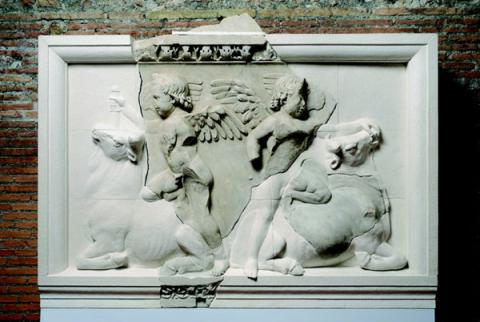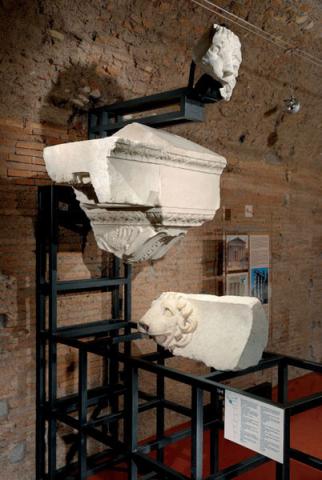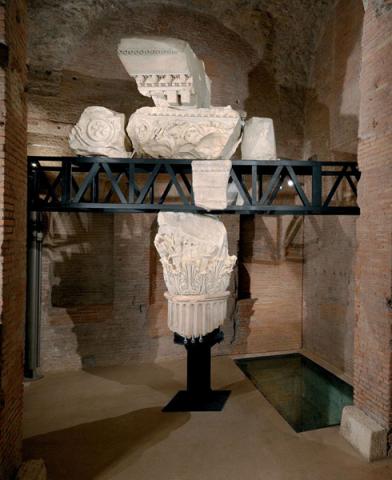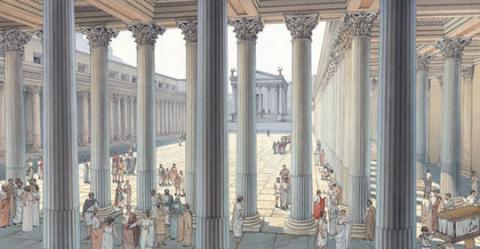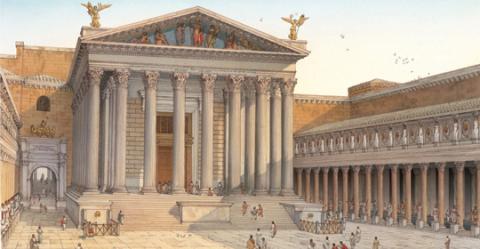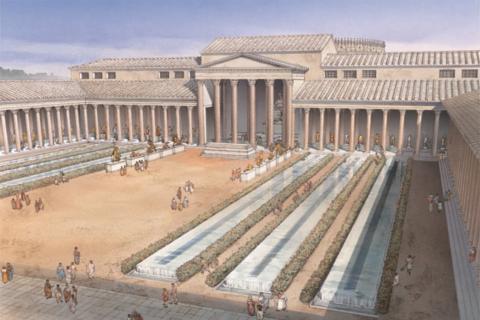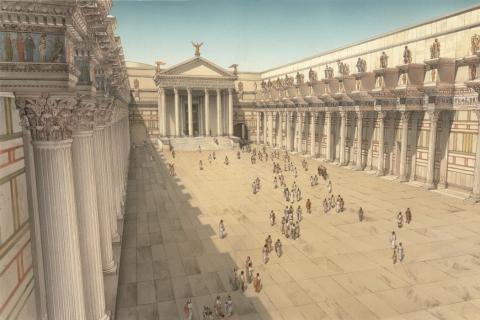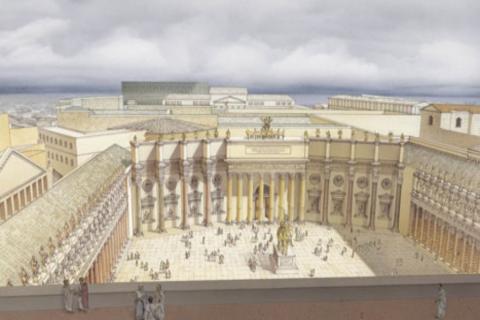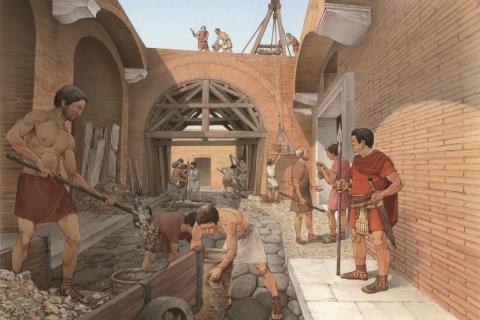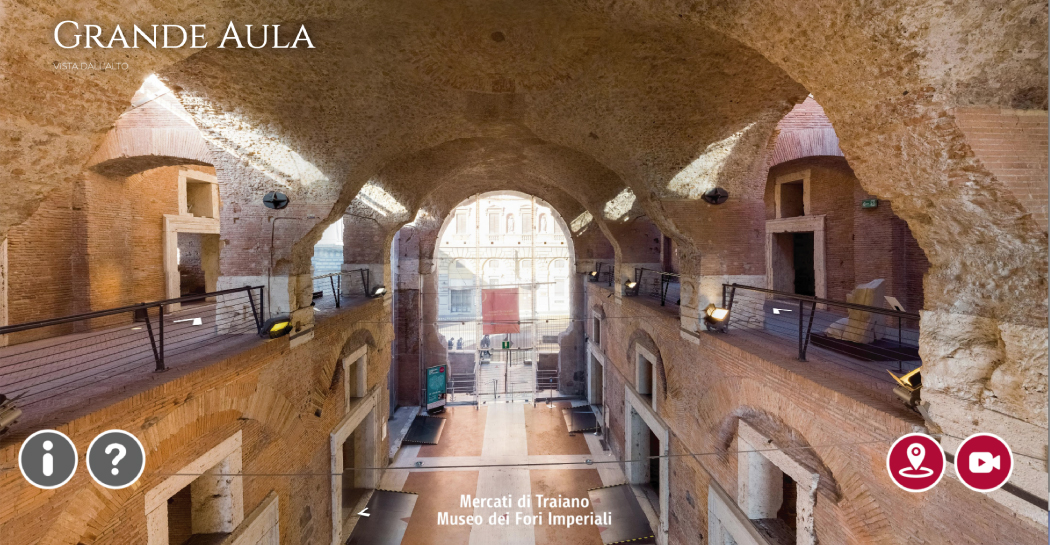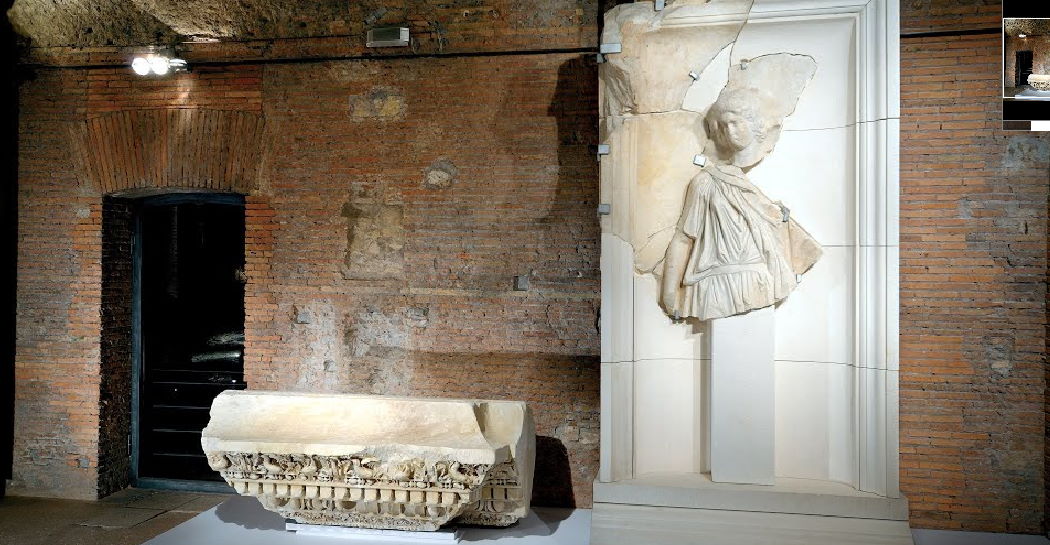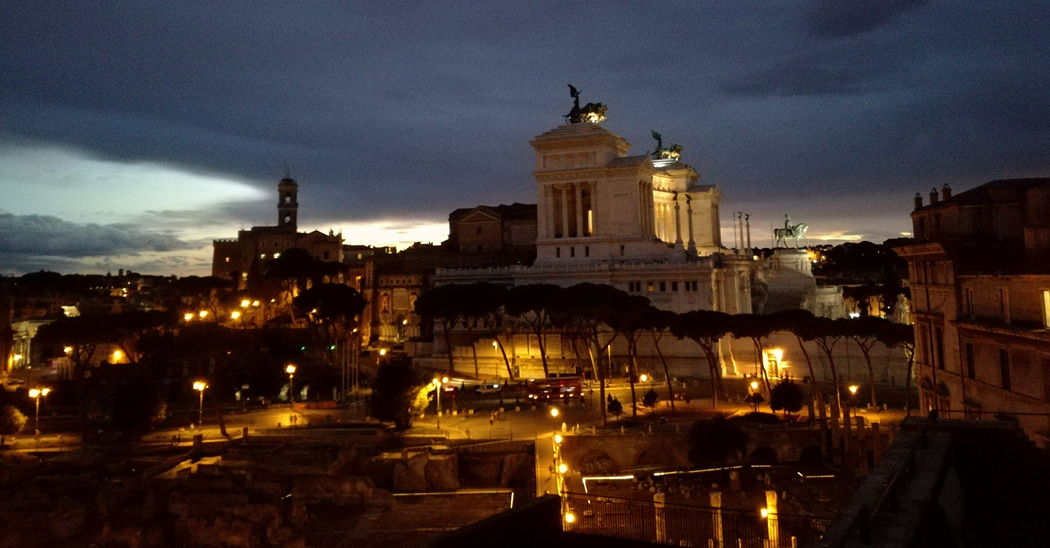Archaeological Area
The five monumental complexes named the “Imperial Forums” were constructed in topographic continuity with the old Roman Forums of the imperial-republican era. The new structures substituted the religious, political and administrative functions of the former.
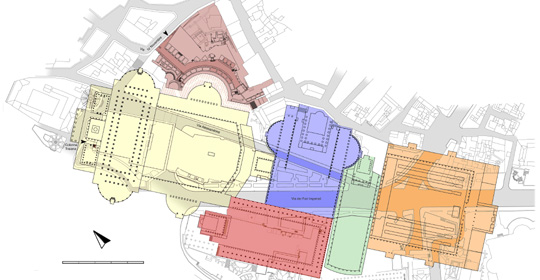

In chronological order of inauguration the forums built were: the Forum of Caesar (46 BC), the Forum of Augustus (2 BC), The Temple of Peace or Templum Pacis (75 AD), Forum of Nerva or Forum Transitorium (97AD) and the Forum of Trajan (112 and 113 AD). During the opening of the later a restored Forum of Caesar was also inaugurated as was the complex of buildings today known as the Markets of Trajan. The forum complexes were built with the wealth accumulated during wars. They had a celebratory and auto-representative character for their clients, whose empire guaranteed peace in Rome.
To site them under the Palatine the urban landscape was modified and some pre-dating public structures (even sacred ones) were sacrificed. Significantly, the engraved inscription on the base of the Column of Trajan catalogues all that was dismantled for the construction of his forum. Each complex was designed in conceptual and physical relationship with the previous one and they were connected through openings on various sides.
From an urban-architectural point of view the forums are monumental arcaded squares shaped around centralised axis circuit points. In relation to the space employed and the constraints imposed by pre-existing structures, they were of different sizes and orientation. The far end was made more imposing by the construction of a temple, which was dedicated to the protective divinity of the commissioning emperor. The emperor’s presence was repeatedly evoked through representations of him on horseback or on war wagons, inscriptions with his name and symbolic references in iconography and decorative motifs.
The juridical-administrative functions were performed in civil basilicas, while the cultural function was provided by libraries and galleries of statues. The architectural scheme, monumentalised by the huge dimensions employed and the rich decorative and sculptural apparatus made of precious coloured marbles, was a model to be exported and reproduced in Roman provinces.


























